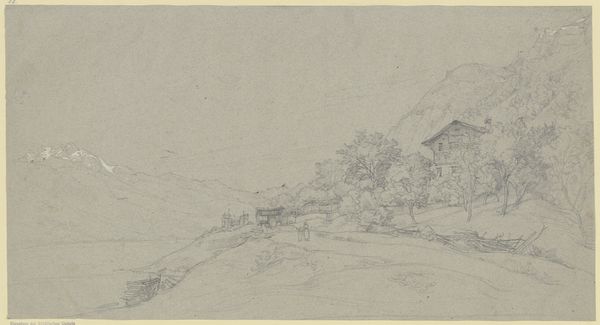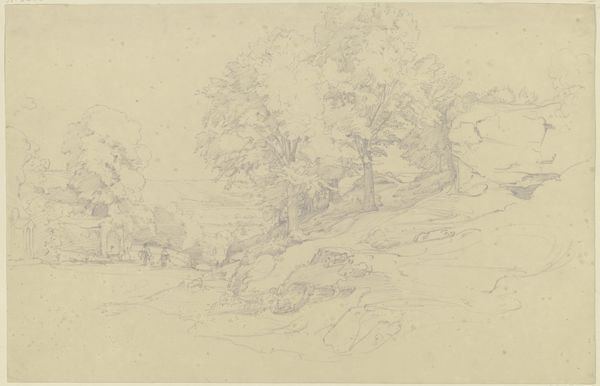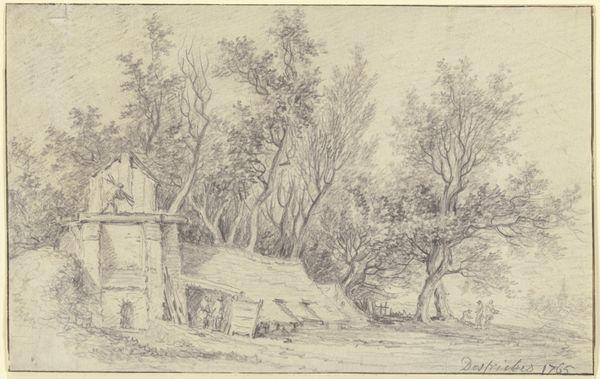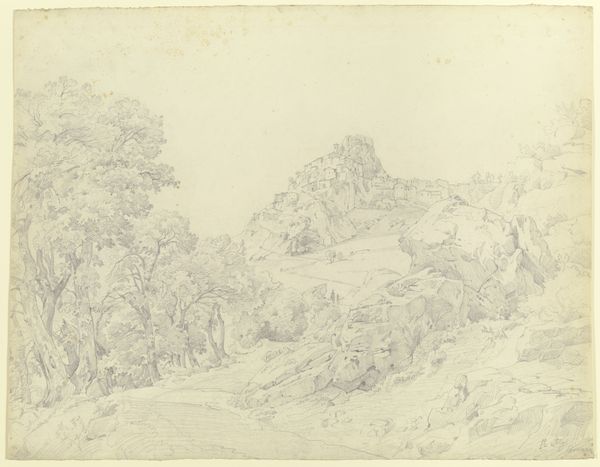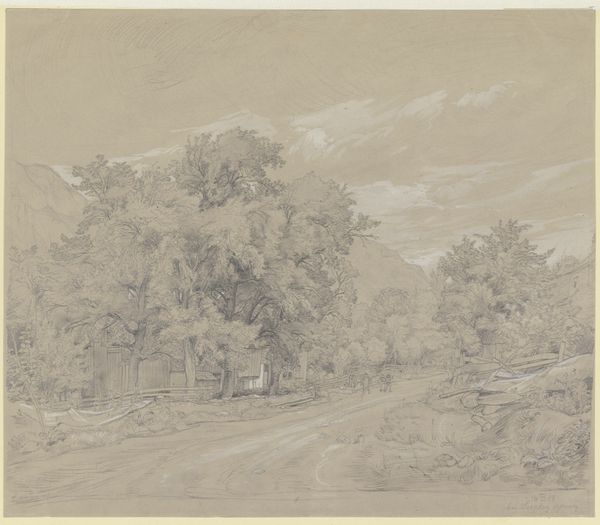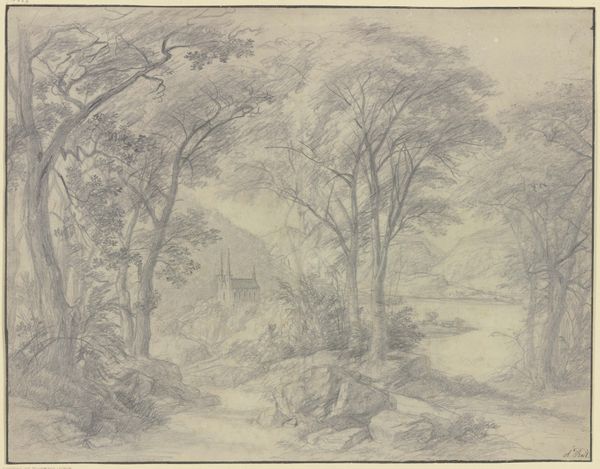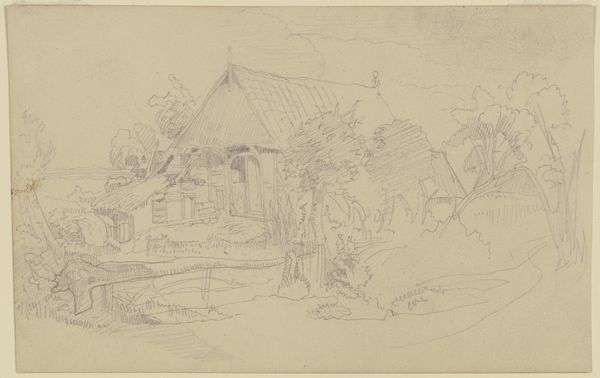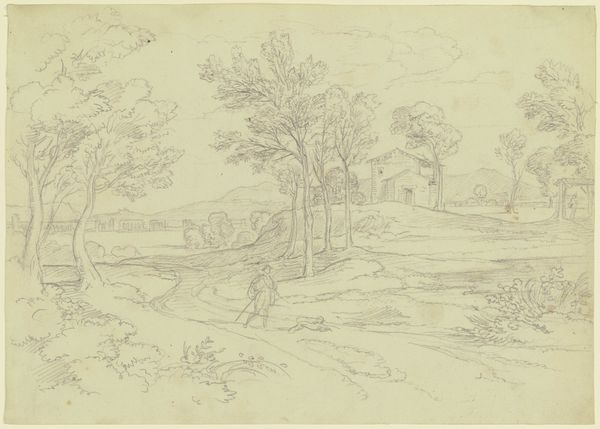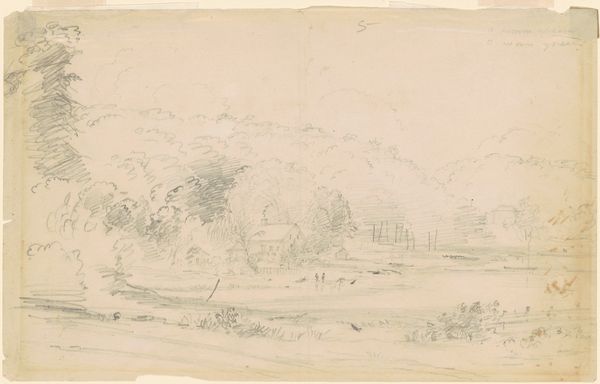
Gebirgspartie mit Ruinen auf den Bergen, vorn ein Wasser mit einigen Hütten
0:00
0:00
drawing, paper, pencil
#
drawing
#
landscape
#
paper
#
romanticism
#
pencil
Copyright: Public Domain
Editor: This is Johann Wilhelm Schirmer's "Mountain Scene with Ruins on the Mountains, in Front a Water with Some Huts," done with pencil on paper. It’s interesting how the artist juxtaposes the simple huts with the grand ruins, giving the whole scene a sort of nostalgic and almost melancholic feel. What do you see in this piece? Curator: The piece brings up some crucial points when thinking about landscape art. It is a pencil drawing; the physical act and the directness are striking, even in a romanticized setting. Considering the paper and pencil—mass-produced materials—brings into focus the tension between the industrial revolution and the desire to capture the 'sublime' untouched nature. How does this mass production influence ideas around originality and authenticity, or perhaps romanticized concepts of labor? Editor: That's a great point! I was so focused on the landscape aspect, I hadn't considered the impact of readily available materials on the artistic process itself. Does the accessibility of the materials change our perception of the artwork, versus, say, a fresco painting from the Renaissance? Curator: Absolutely. We might consider the relative affordability of paper and pencils democratizing artistic expression or the tension with high-art oil paintings on canvas. Who had access to this medium and where and what impact could that have in terms of who gets to represent such landscapes? Editor: So, the pencil, normally seen as just a tool for sketching, becomes an integral part of the artwork's meaning and its context. Curator: Exactly! The means of production, even something as seemingly simple as a pencil, becomes a lens to interpret the entire work. It reveals assumptions of class, and accessibility inherent in art making. Editor: This has really given me a new perspective. It makes me think about what’s behind the scenes – or in this case, within the medium itself. Thanks! Curator: My pleasure. Focusing on the material realities challenges us to move beyond just aesthetic appreciation, inviting us to ask questions about the social and economic forces shaping what we see.
Comments
No comments
Be the first to comment and join the conversation on the ultimate creative platform.
